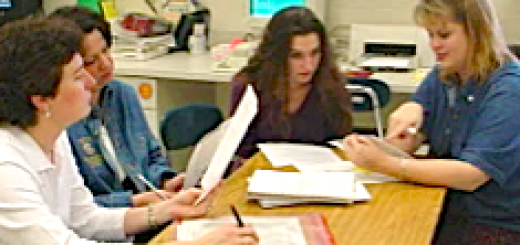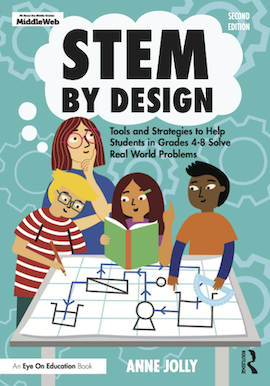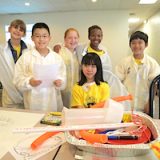5 Things New STEM Teachers Can Do Right Now
I started my journey into middle school teaching during a teacher shortage crisis. I had a BS in biology, zero courses in education, and an emergency teaching certificate. However, my only real qualification at that time was that I had a pulse.
Today schools are not only dealing with general teacher shortages but are also searching for qualified individuals to fill a record number of STEM teaching positions.
You may be a recent graduate with a teacher education degree. Or perhaps you’re one of those emergency certified teachers assigned to teach STEM. Or you may be an experienced teacher who has suddenly learned that you will be teaching STEM this year for the first time.
In any of these cases, you may lack specific preparation in STEM content and teaching methods. Will this put you at a disadvantage as a STEM teacher? Not necessarily!
A quick note about STEM: The term STEM isn’t used consistently in schools across the United States. Some school systems may use it synonymously with “Science.” When I talk about STEM here, I refer to the combination of Science, Technology, Engineering and Mathematics taught using the engineering design process. (See What Is STEM Education.)
Remember that STEM is a relatively recent area of study that engages students in non-traditional ways of learning. Few teachers have specific training in teaching STEM, so you’re part of a cutting-edge effort involving teachers of all experience levels. If you’re lucky enough to begin teaching STEM at the beginning of school, you have this entire year to learn and try out best ways of leading STEM projects.
Or you may have been thrust into your new role sometime during the year. Whatever the case, you obviously want to get off on the right foot, so I’ll offer 5 ideas to help during the first week.
1. Find out about your students
The first week, before you begin leading STEM projects, start establishing your leadership of a positive classroom community and get to know your students. Middle schoolers are the most intriguing and amazing group of students you’ll ever teach. Your attitude and interest in them sets the climate for their learning. Take time to find out about traits they liked in their favorite teachers, their favorite way of learning, and behaviors they value in you and one another.
Let your students know that you like them and look forward to teaching them (even at times when you’re not so sure you do!). Remember – middle schoolers may totally change personality from one day to the next. At this age, they’re not always sure who they are – and you won’t always know either – so just go with it.
2. Get a handle on Project Based Learning (PBL)
Even experienced teachers find STEM to be a new challenge. If you aren’t familiar with the PBL teaching method find out all you can about it. PBL is hands-down the most successful method of involving your students in STEM challenges.
3. Start stuffing your STEM toolkit
When leading STEM challenges, you’re preparing kids for their future occupations whether or not they choose a designated STEM field. For example, STEM content includes a heavy emphasis on “soft skills” – often called “life skills” or SEL.
Business identifies SEL skills as being critically important to workforce success. They lament that workers are noticeably lacking in these essential aspects, and this affects their quality of work. Start now to plan how to work SEL skills into your classes for all students.
Don’t panic! Remember that you can think this through and incorporate various skills into your projects throughout the year. For the first week, pick one skill to begin building in students – perhaps something familiar, like respect. Online help is out there to help you figure out how to help kids learn SEL skills.
As far as explaining the actual STEM principles and skills – I don’t have space to go into STEM particulars in this post, so please start your study by checking out What is STEM Education?, 10 Criteria for STEM, and STEM lessons. This will give you a beginning foundation in basic STEM principles and the all-important Engineering Design Process.
4. Begin with a simple STEM challenge
Decide on a simple, interesting STEM challenge to introduce (or reintroduce) kids to the STEM process and the way they will be approaching challenges. You might give them this handout to read over as homework after you introduce STEM. (Be sure you have the materials and equipment kids will need for this project.) You can find a few project ideas here.
Be sure to make these points with the kids upfront.
In STEM work, failing to solve a challenge is not a bad thing. It’s just a normal part of engineering work and is the way they will get information to rethink their solutions and try again.
You won’t be giving kids instructions on how to solve their challenge – they will come up with their own solutions and experiment to see if they work.
Different teams may come up with different solutions. That’s okay – there are usually several correct answers.
5. Set kids up for successful team experiences
To solve problems kids will work in teams. Your students may have worked in teams before and probably acquired some unproductive (useless) teaming habits. During the first week, start them working on at least one successful teaming strategy. Gradually build this skill set throughout the school year. Download a free booklet from this site for procedures for setting up successful student teams.
A couple of additional first-week tips
► Post a chart in the room showing the engineering design process (EDP) so kids can see it as they work on challenges. Remind them that they can go back and forth between the steps.
► Introduce students to digital technology they will be using in their first challenge and make sure they feel comfortable with it.
► Begin helping them think like problem-solvers. As one of your first classroom activities, toss out a problem and ask them to get in small teams and suggest solutions. Point out that they should consider many possible solutions when solving STEM problems, and different teams may come up with different correct ways of solving the problem. Explain that out-of-the-box ideas are welcome.
It takes time. Be kind to yourself.
Please note that it can take a full year for STEM projects to become ingrained as a way of doing business in your class. When this happens, the culture of your classroom shifts, and students will begin to support one another as fellow learners. In fact, team members begin to take responsibility for the success of one another.
Also note that there is no “one size fits all” in establishing a successful STEM process. Mechanically following these procedures I suggest will not bring about magical results. Intentionally continue to study, implement, assess, and adjust STEM projects. Tailor this process for your students as you learn. Be flexible, resilient and positive, and enjoy the journey!












